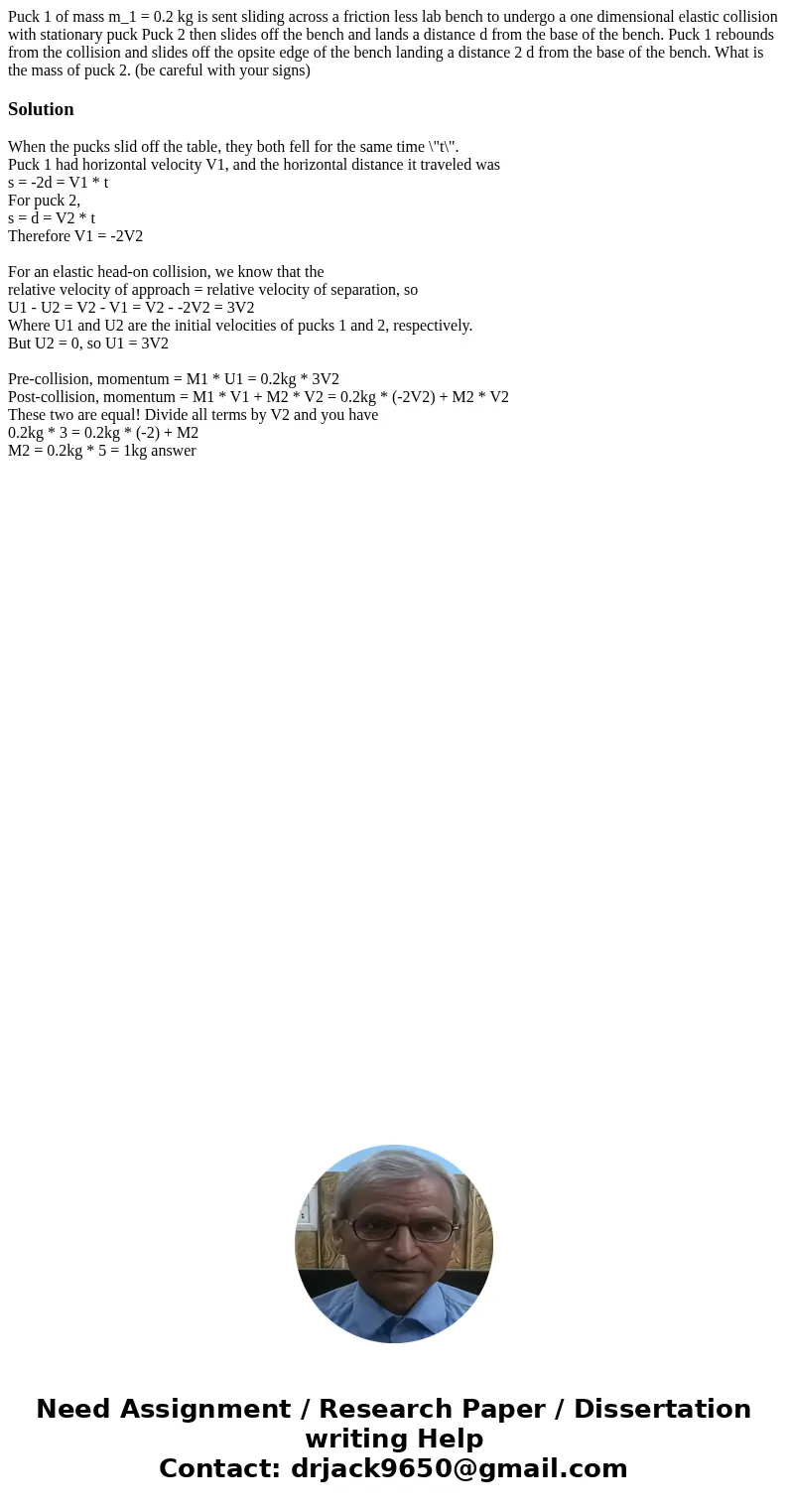Puck 1 of mass m1 02 kg is sent sliding across a friction l
Puck 1 of mass m_1 = 0.2 kg is sent sliding across a friction less lab bench to undergo a one dimensional elastic collision with stationary puck Puck 2 then slides off the bench and lands a distance d from the base of the bench. Puck 1 rebounds from the collision and slides off the opsite edge of the bench landing a distance 2 d from the base of the bench. What is the mass of puck 2. (be careful with your signs)
Solution
When the pucks slid off the table, they both fell for the same time \"t\".
Puck 1 had horizontal velocity V1, and the horizontal distance it traveled was
s = -2d = V1 * t
For puck 2,
s = d = V2 * t
Therefore V1 = -2V2
For an elastic head-on collision, we know that the
relative velocity of approach = relative velocity of separation, so
U1 - U2 = V2 - V1 = V2 - -2V2 = 3V2
Where U1 and U2 are the initial velocities of pucks 1 and 2, respectively.
But U2 = 0, so U1 = 3V2
Pre-collision, momentum = M1 * U1 = 0.2kg * 3V2
Post-collision, momentum = M1 * V1 + M2 * V2 = 0.2kg * (-2V2) + M2 * V2
These two are equal! Divide all terms by V2 and you have
0.2kg * 3 = 0.2kg * (-2) + M2
M2 = 0.2kg * 5 = 1kg answer

 Homework Sourse
Homework Sourse